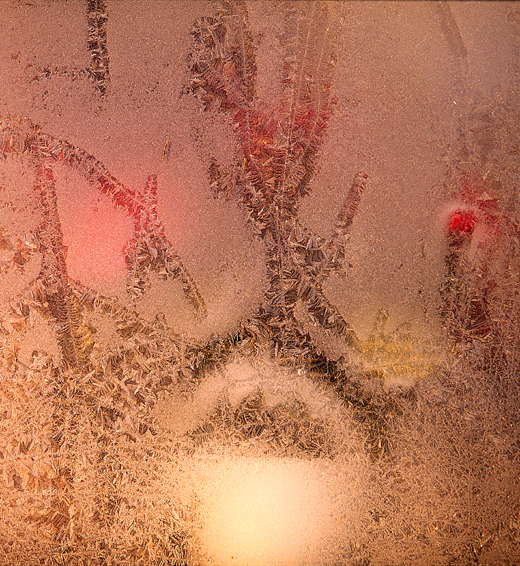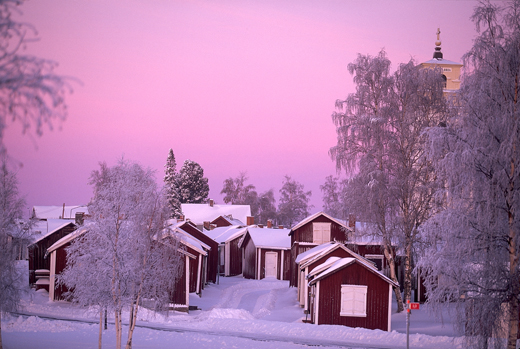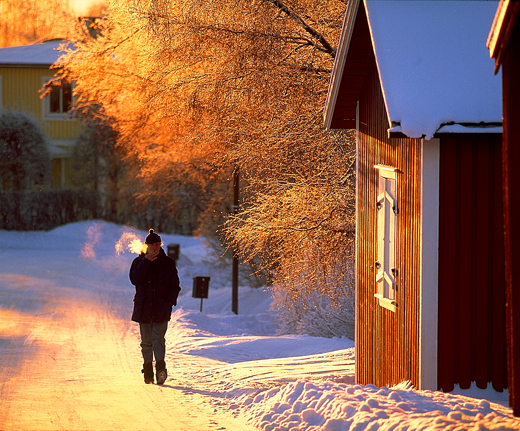Swedes brace for record cold.
Arctic air and record snow all over Europe, cold and snow fall inflicting havoc across India, China, South Korea, Western Europe and parts of the US. The icy conditions of late have broken records in half a dozen countries and are at the time of going to press, expected to continue.
-
 Arctic weather in central Sweden —so far, more mild in the north, where severe winters may have created the need for church towns such as Gammelstad, Luleå.
Arctic weather in central Sweden —so far, more mild in the north, where severe winters may have created the need for church towns such as Gammelstad, Luleå. -
-
Residents all over Sweden are bracing for record cold temperatures as another cold front sweeped into Sweden from Siberia. Meteorologists at SMHI said temperatures in Dalarna could drop to as low as -44 Celsius (-47 Fahrenheit) first week of January.
Chilly temperatures are expected to blanket large swathes of central and northern Sweden while remaining somewhat less frigid in southern and western Sweden.
“Really cold air has moved in from the north,” SMHI meteorologist Per Holmberg told the TT news agency. “We expect very light winds and also very clear weather there. Primarily in the valleys is where it will get the coldest.”
According to SMHI’s forecast, daytime temperatures in Dalarna aren’t expected to climb above 36 degrees below zero (-33 Fahrenheit).
Icy cold temperatures are expected to remain in place before slowly climbing again.
The lowest January temperature ever recorded in Sweden is minus 49 degrees Celsius (-56.2 Fahrenheit), most recently in Karesuando, located on Sweden’s northern border with Finland. The same temperature was also recorded in 1951 in Vuoggatjålme in the mountains of northwestern Sweden, about 30 kilometres from the Norwegian border.
This winter has been mild in northern Sweden, however, with tempreatures in for instance Luleå seldom reaching -5 Fahrenheit (-21 Celcius). It is colder in central Sweden and even Stockholm has seen temperatures often on par with those in the north. -
 A cold winter day in Gammelstad, Sweden’s best preserved example of the church town with the largest number of preserved church cottages. Photo: Pär Domeij.
A cold winter day in Gammelstad, Sweden’s best preserved example of the church town with the largest number of preserved church cottages. Photo: Pär Domeij. -
-
Gammelstad, Lulelå
Our photo on Page One by Luleå based photographer Pär Domeij, is of Gammelstad, on the list of the UNESCO World Heritage sites since 1996 and a world-class attraction. During the 16th and 17th centuries, church towns developed around the sites of medieval churches in Sweden’s far north. The church town was a settlement of cottages for temporary use adjacent to the parish church. Outside the church town was often a church village, which was a settlement for permanent residents. The main difference between the two is that the church town was intended for temporary ude duing major festivals and Sundays, and a distinctive and vigorous tradition of religious and social interaction developed here.
Parishioners came to church for spiritual reasons—whether they wanted to or not. An early royal decree required the population to be present on Sundays (there were, however, some dispensations for those traveling long distances). But the church was also the center for contact with other people. People whose everyday contacts were limited to their villages or farms were able to socialize there. The church town’s importance for the spreading of news and information and for matchmaking can hardly be overestmated. In addition there was a market and district court.
The origins of the church town are unclear, despite many attempts to explain them. One theory originates in the so-called dormitory cottages and storehouses that merchants built near marketplaces that they visited only seasonally. Another refers to the church stables that were built near many churches in northern Sweden so that the horses could be kept warm during the winter while the farmers attended church. In any case, the custom of using the church town is still alive in Gammelstad, Luleå, where the church town and village remain physically intertwined.
The stone church itself was built in the middle of the 15th century and is the largest of its kind in northern Scandinavia. Building the church at the time was a costly project for the area’s few inhabitants. The richness and dignity of the structure is enhanced by its altarpiece, brought from Antwerp in the 1520s.
The church town in Gammelstad—424 buildings divided into about 555 spearate chambers—is an important tourist attraction, drawing thousands of visitors each year. It is of international importance as the foremost representative of all of Scandinavia’s church towns. -
 Very little changed in Gammelstad over the years. Photo: Pär Domeij.
Very little changed in Gammelstad over the years. Photo: Pär Domeij. -
For more info on Gammelstad and Luleå, see www.lulea.se (to see Swedish temperatures right now, see www.temperatur.nu).
-
-
